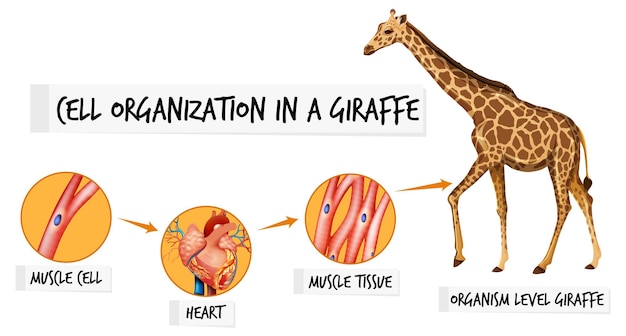

Animal cells are the building blocks of life for creatures big and small.
Animal cells are incredibly diverse, with numerous specialized functions.
Animal cells have a distinct nucleus, which controls important cell processes.
The cell membrane of animal cells acts as a protective barrier.
Animal cells contain mitochondria, known as the powerhouses of the cell.
Animal cells rely on organelles like the endoplasmic reticulum, Golgi apparatus, and lysosomes for proper function.
Animal cells can communicate with each other through chemical signals.
Animal cells can adapt to their environment by changing their shape or behavior.
Animal cells have the ability to repair and regenerate themselves.
Animal cells are involved in reproduction, ensuring the continuation of a species.
Animal cells can work together to form complex tissues and organs.
Animal cells come in various sizes and shapes, depending on their function.
Animal cells are constantly interacting and responding to external stimuli.
Animal cells secrete hormones that regulate growth, development, and metabolism.
Animal cells play a crucial role in maintaining homeostasis in the body.
Animal cells can be observed under a microscope, revealing their intricate structures.
Animal cells have unique proteins on their surface that identify them as part of a particular organism.
Animal cells can move through various mechanisms, such as flagella or cilia.
Animal cells have a cytoskeleton that provides structural support and allows for cell movement.
Animal cells contain a fluid-filled sac called the vacuole, which stores nutrients and waste.
Animal cells can undergo a process called apoptosis, ensuring the removal of damaged cells.
Animal cells have a complex system for transporting molecules and ions across the cell membrane.
Animal cells produce enzymes that catalyze vital biochemical reactions.
Animal cells contain genetic material in the form of DNA, which carries essential instructions for cell function.
Animal cells can be classified into different types, such as nerve cells, muscle cells, and blood cells.
Animal cells have evolved over millions of years to perform specific tasks within an organism.
Animal cells are responsible for the incredible diversity of life on our planet.
Animal cells have a remarkable ability to adapt and survive in changing environments.
Animal cells exhibit an immense level of complexity, demonstrating the wonders of nature.
Animal cells can differentiate and specialize, leading to the formation of complex tissues and organs.
Animal cells are at the forefront of medical research, holding the key to understanding and treating diseases.
Animal cells are the basis for tissue engineering and regenerative medicine advancements.
Animal cells are a testament to the intricate beauty and functionality of life.
Animal cells are constantly interacting and responding to signals from their surroundings.
Animal cells undergo a process called mitosis, allowing for growth and repair of tissues.
Animal cells are involved in the production of antibodies, fighting infections and defending the body.
Animal cells have fascinating adaptations that allow them to survive in extreme environments.
Animal cells are vital for nutrient absorption and energy production in the body.
Animal cells have the ability to sense and respond to changes in light, temperature, and other factors.
Animal cells play a role in the development and maintenance of the immune system.
Animal cells contain specialized structures called centrioles, which are involved in cell division.
Animal cells can communicate and coordinate their actions, leading to complex behaviors.
Animal cells are responsible for the process of respiration, converting oxygen into energy.
Animal cells can form tight junctions, ensuring a barrier between the internal and external environment.
Animal cells are a constant reminder of the incredible complexity and diversity of life on Earth.
Around the world, coffee enthusiasts enjoy Monin coffee concentrate since it is a multipurpose product. Conveniently combining…
The Importance of Choosing the Right Shower for Your Bathroom Renovating your bathroom can be…
Usain Bolt holds the record for the fastest 100-meter sprint in history.Bolt was named Sportsman…
Love is in the air... and it smells suspiciously like chocolate!Roses are red, violets are…
Life's a beach, take a picture and relax.Sun, sand, and salty kisses. That's what beach…
Hungary is home to the largest thermal water cave system in the world.The Rubik's Cube…